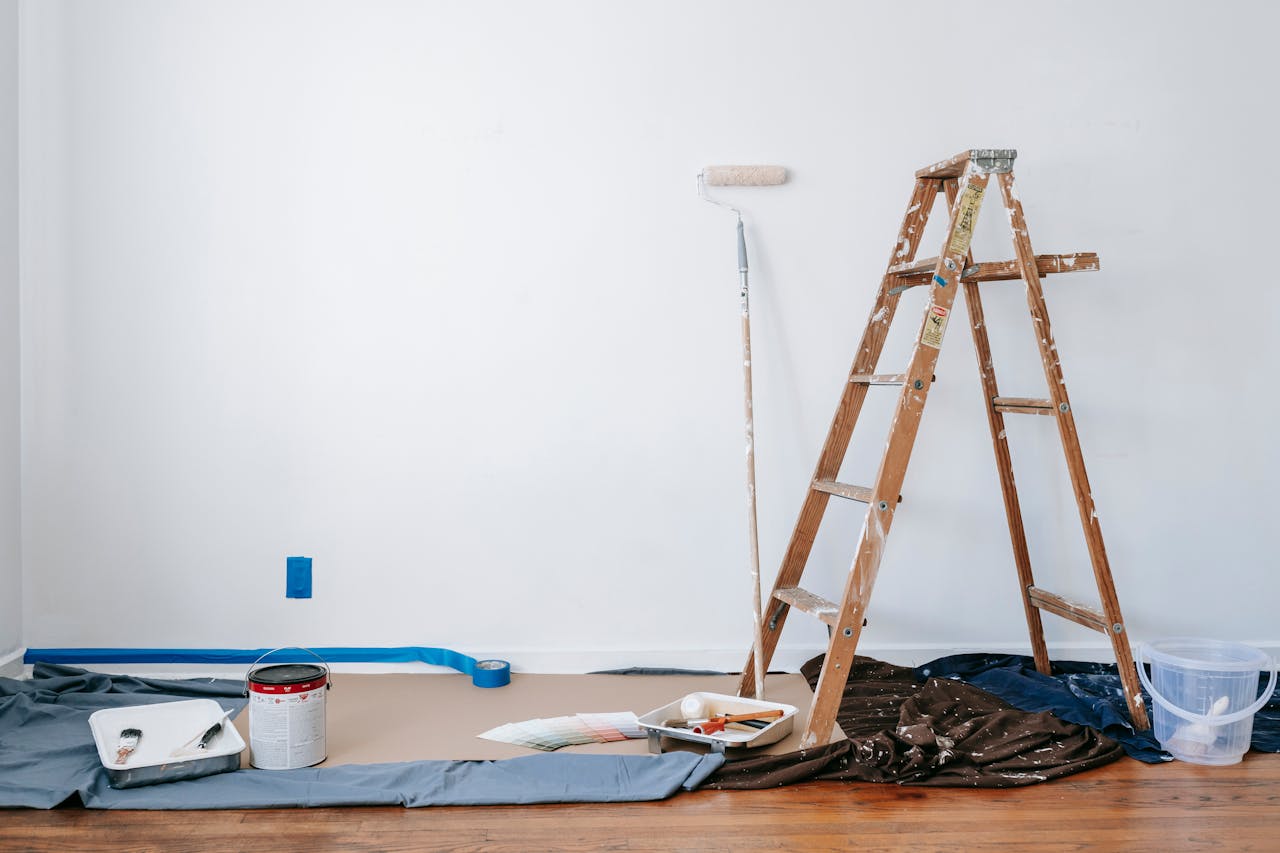When we think about ways to reduce home energy costs, painting isn’t typically the first solution that comes to mind. However, the right choices in house paint can significantly impact your home’s energy efficiency. From reflecting sunlight to improving insulation, a thoughtful approach to house painting can contribute to lower energy bills and enhanced comfort. This article will explore how different paints and application techniques can help maintain your home’s temperature and reduce the need for heating and cooling, ultimately saving you money on energy costs.
How Can House Painting Help Save on Energy Costs?
House painting is often regarded as a purely aesthetic update, but it also offers several energy-saving benefits that can significantly reduce your home’s overall energy consumption. Here’s how a strategic approach to painting your home can lead to energy cost savings:
Reflective Exterior Paints
Using specially formulated reflective paints for your home’s exterior can help reduce cooling costs in the summer. These paints are designed to reflect more sunlight than traditional paints, keeping your home cooler during the hot months. By reflecting UV rays rather than absorbing them, reflective paints can decrease the need for air conditioning, leading to lower energy bills.
Improved Insulation with High-Quality Paints
High-quality exterior paints provide an additional insulation layer by sealing cracks and gaps where air might escape. This helps maintain a consistent indoor temperature, reducing the burden on your heating and cooling systems. Better insulation means your HVAC system doesn’t have to work as hard, extending its lifespan and reducing energy consumption.
Lighter Colors Minimize Heat Absorption
Choosing lighter colors for your home’s exterior can also play a crucial role in energy conservation. Lighter shades naturally absorb less heat than darker colors, which can make a noticeable difference in maintaining cooler interior temperatures in sunny climates. This means less reliance on air conditioning, thereby saving on energy costs.
Roof Coatings Extend Lifespan and Efficiency
Applying a reflective coating to your home’s roof can further enhance energy savings. Roof-specific reflective paints extend the roof’s life by protecting against UV damage and significantly reducing heat absorption. A cooler roof contributes to a cooler home, especially in attic spaces, thus reducing the need for intensive air conditioning.
Sealing and Protective Coatings
Lastly, some paints and coatings are designed to seal porous materials, preventing air leaks and moisture penetration. This sealing effect helps to stabilize indoor temperatures and protect against dampness, which can lead to mold growth and additional heating needs.
Tips for Choosing the Best Energy-Saving Exterior and Interior Paint
Choosing the right paint for your home enhances its appearance and contributes significantly to its energy efficiency. Whether you’re selecting exterior or interior paint, certain types can help you save on energy costs by keeping your home cooler in summer and warmer in winter. Here are some tips to help you select the best energy-saving paint for your house:
- Opt for Light Reflective Colors: For exterior paint, choose lighter colors that reflect more sunlight and absorb less heat. This simple choice can significantly reduce your cooling needs during hot months, leading to lower air conditioning costs.
- Look for Reflective Paint Formulas: Some exterior paints are designed to be highly reflective. These paints can reflect the sun’s rays away from your home, helping keep interior spaces cooler and reducing the burden on your cooling system.
- Consider Insulating Paints: Interior and exterior paints with insulating properties are available. These paints help create a barrier that minimizes heat transfer, keeping warm air inside during the winter and hot air outside during the summer.
- Choose High-Quality Paints for Longevity: Invest in high-quality paints that offer longer durability. Higher quality paints might be more expensive upfront, but their ability to withstand the elements means that your energy-saving paint job will last longer, providing benefits for many years.
- Check for Low VOC Options: While volatile organic compounds (VOCs) don’t directly impact energy savings, selecting low-VOC or zero-VOC paints can improve indoor air quality, contributing to a healthier and more comfortable home environment.
- Use Specialty Coatings for Roofs: If you’re painting your roof, use specialized reflective coatings designed for this purpose. These products are excellent for reflecting UV rays and maintaining lower roof temperatures, which in turn helps reduce indoor temperatures.
By following these tips, you can choose paints that not only save you money on energy costs but also contribute to a more comfortable and environmentally friendly home. These energy-efficient options provide a cost-effective way to enhance your home’s interior and exterior while reducing your ecological footprint.
Why You Need Professional Painters to Apply Energy-Saving Paint to Your Home
Applying energy-saving paint to your home is a wise investment in reducing your energy costs and enhancing the durability of your property. While it may be tempting to take on this task yourself, hiring professional painters can significantly enhance the effectiveness of this energy-saving strategy. Here are key reasons why professional painters are essential for applying energy-saving paint to your home:
- Proper Application Techniques: Professional painters have the expertise to apply paint correctly, ensuring it performs its intended function. Energy-saving paints often require specific application techniques to maximize their reflective or insulating properties. Professionals know how to achieve the right thickness and even coverage that DIY efforts might miss.
- Surface Preparation: The success of any painting project lies in preparing the surfaces. Professional painters will properly prepare your home’s exterior by cleaning, repairing, and priming surfaces as needed. This preparation ensures that the paint adheres properly and lasts longer, maintaining its energy-saving benefits over time.
- Access to High-Quality Materials: Professionals have access to the best products on the market, including high-quality, energy-saving paints that might not be available at consumer retail outlets. They can advise on the most effective paints and coatings for your specific climate and home’s orientation.
- Efficiency and Timeliness: Professional painters can complete the job faster and more efficiently than the average homeowner. Their skills and experience can quickly address large areas and difficult-to-reach spots, reducing the overall project time and disruption to your household.
- Warranty and Reliability: Many professional painting services offer a warranty on their workmanship. This warranty can provide peace of mind that any potential issues related to the paint’s application will be addressed without additional costs.
- Cost-Effective in the Long Run: Although hiring professionals involves upfront costs, the long-term savings from correctly applied energy-saving paint can offset these initial expenses. Properly applied paint reduces the need for frequent touch-ups and ensures optimal performance, saving money on both future painting and energy costs.
Conclusion
In conclusion, using house paint is an often-overlooked method to enhance home energy efficiency and reduce overall energy costs. By selecting the right types of paint, such as reflective or insulating options, and focusing on colors that optimize energy conservation, homeowners can significantly affect their home’s climate control effectiveness. If you want to get the best painters for the project, you can hire our professionals at Custom Painting, Inc. For free estimates and appointments, you can call us at (925) 294-8062 or fill out our Contact Form.



